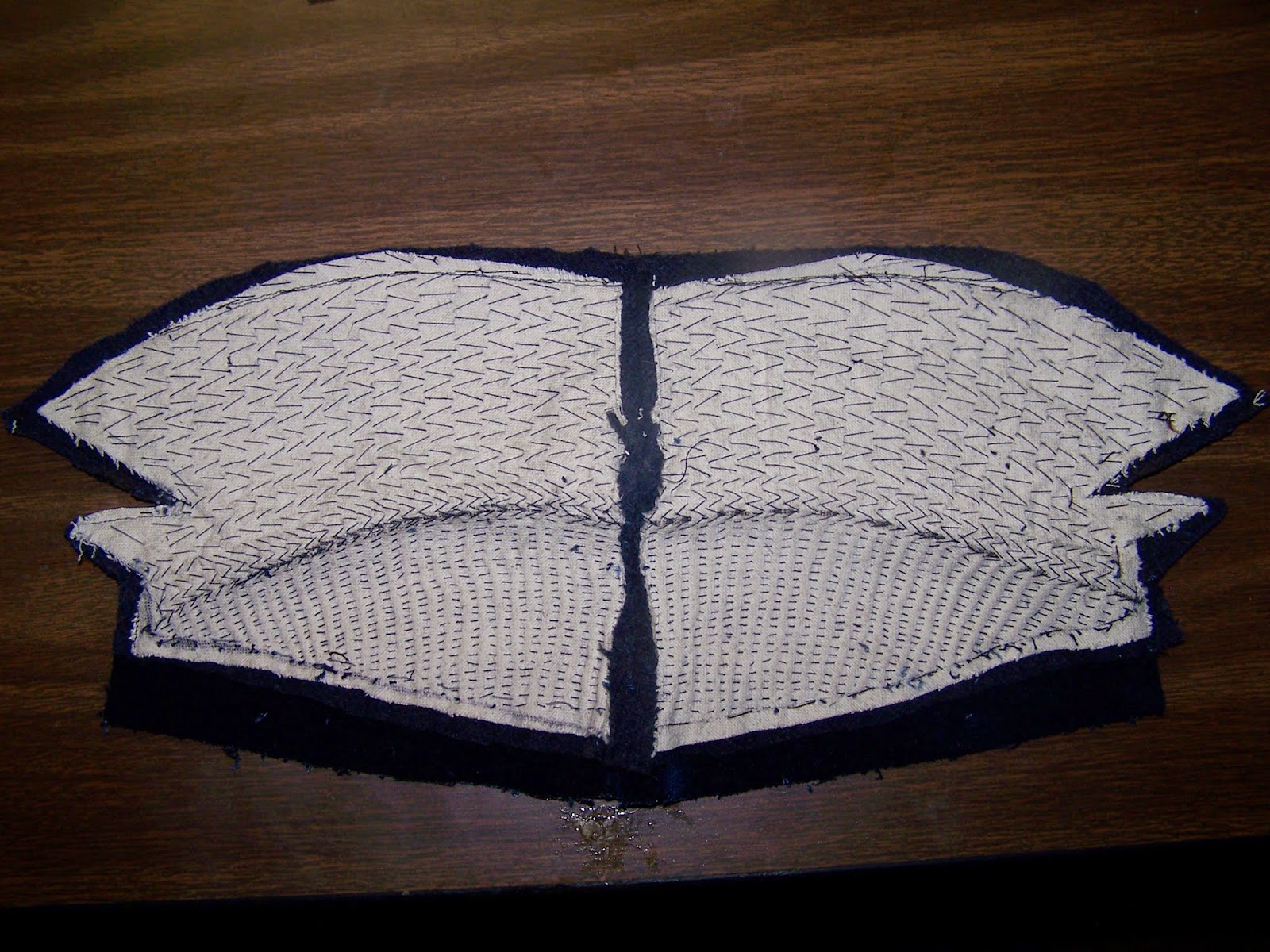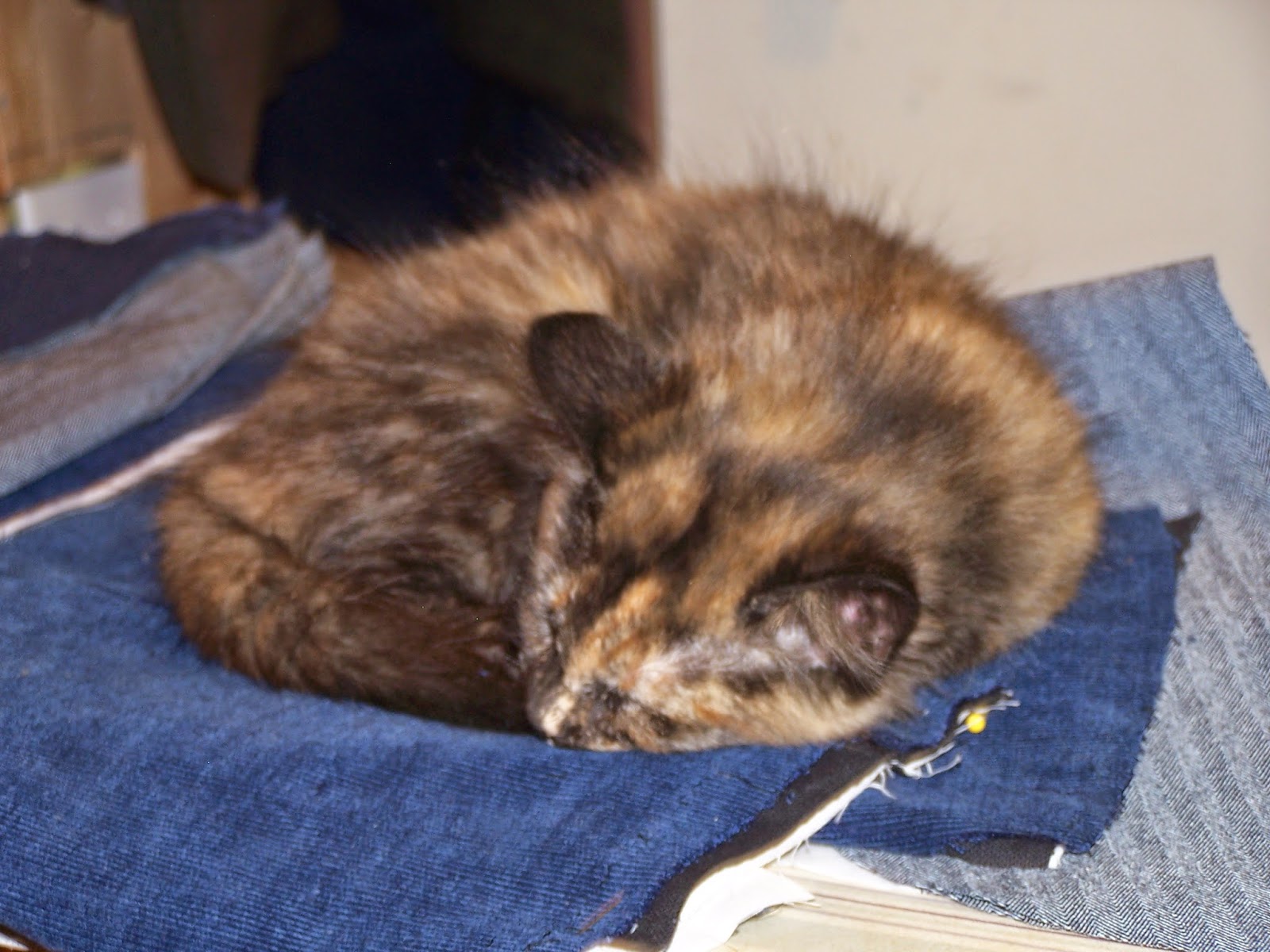The Challenge: No. 15, The Great Outdoors.

Fabric: Cotton Corduroy shell, cotton interlining/self linings
Pattern: Instructions from The Costumer's Manifesto, i.e. self drafted. Posts covering it are here (body), and here (sleeves). I was inspired partially by the painting Wanderer Above the Sea of Fog, a painting by the German artist Caspar Friedrich.
 |
| Wanderer above the Sea of Fog |
Year: 1818
Notions: Brass buttons. Materials were all from stash (corduroy shell, muslin self lining, canvas interlinings)
How historically accurate is it?: The pattern is as accurate as I was able to make, as is the interior construction--I did, however, use a machine for the stitching during construction (the facings, and everything visible from the outside are by hand). Fabrics, on the other hand are so-so. The inspiring garment appears to be made of velvet, rather than wool. There is a extant frock coat (a child's) from a slightly later period, in America, made of cotton. Someday, I would like to remake the garment or outfit in velvet. Maybe 50-65% accurate, between the materials and machine construction.
Hours to complete: 48 hours.
First worn: Not quite yet.
Total cost: 14$ for the buttons. All fabrics for this project came from my stash.
Notes: The coat body was relatively simple--just a close fitting draft of a frock coat. As it is so close fitting, I chose to minimize the number of pockets to just the plait or pleat pockets in back. I did have issues deciding on an appropriate sleeve cuff style, since it cannot really be seen in the painting. After a fair amount of looking at examples of frock and tail coats from the time (1815-1820), I ran across this one (image below); it has a separate, lightly flared cuff, which is what I imagine I'm seeing in the painting, and suits my tastes. The sewn on portion of the cuff does have four working buttons, is faced with the velvet, and interlined with canvas. The sleeve heads are gathered.
 |
| From Here. |
 |
| The Cuff. It did take a couple tries--the first one was too long at the outside curve. |
As for the collar, I chose a 'M' notch collar mainly for the challenge. The stand height did end up a bit taller than I would have liked, as in the painting the collar is rather small. The internal construction is done by hand.
 |
| Prick stitching at the stand, and pad stitching on the fall. The under collar is a navy wool flannel. |
 |
| The pieces. |
 |
| Beginning to padstitch the revers. |
 |
| Little Greta, sleeping on the next piece I need, of course. |
 |
| Revers fully stitched, with a tensioned piece of fabric helping define the fall line. |
 |
| I considered adding curved welt pockets to the front skirts, but decided it was pointless--actually putting anything in them would mess with the lines. However, making it was an educational experience. |
 |
| Half of a body. |
©
John Frey, 2014. The Author of this work retains full copyright for this
material. Permission is granted to make and distribute verbatim copies of this
document for non-commercial private research or educational purposes provided
the copyright notice and this permission notice are preserved on all
copies. Photographs of my work may not
be duplicated.


The fit looks great, can't believe it's a self-drafted pattern!?! Tailoring like this is a fine art, I am so impressed with the pad stitching. I hope you get a lot of wear out of this one! Also, what is going on in that Picot painting...
ReplyDeleteThank you. There is still so much to learn. For some reason I really enjoy pad stitching--it's relaxing, and there's something about permanently shaping fabric, just with stitch tension.
DeleteI'm not sure--probably a variety of symbolism that I have no knowledge of. It's the Portrait of Nicholas Pierre Tiolier, if that helps...